Search
Did you mean: Trajan's Column?
Search Results
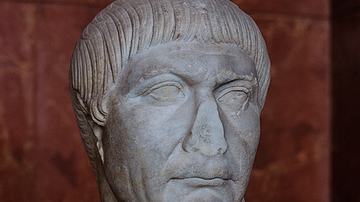
Image
Trajan Bust, Louvre
Marble bust of Roman Emperor Trajan, 112-115 CE. (Musée du Louvre, Paris)

Image
Trajan Statue, London
Roman emperor Trajan (96-117 CE), near Tower Hill, London
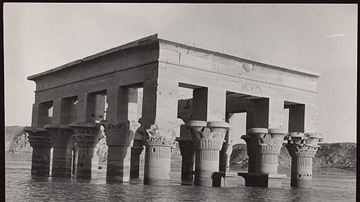
Image
Pavillion of Trajan, Submerged in the Nile
Pavillion of Trajan, in parts submerged by the Nile flooding on the Island of Philae, near Aswan.
Island Philae, Nubia, Egypt (October 1959)
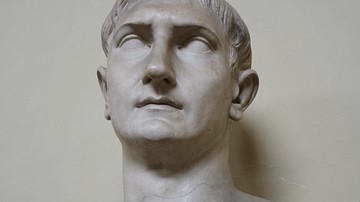
Image
Trajan Bust, Vatican Museums
A bust of Roman emperor Trajan (r. 98-117 CE). The portrait is idealised and was produced in the reign of his successor Hadrian in 117 CE. Provenance: Ostia. (Vatican Museums, Rome).
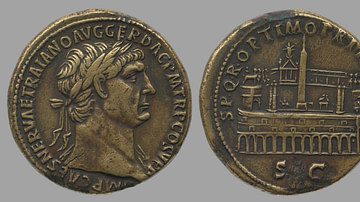
Image
Sestertius Commemorating Trajan's Rebuilding of the Circus Maximus
Sestertius commemorating Trajan's rebuilding of the Circus Maximus, showing the Arch of Titus (not to be confused with the Arch of Titus built over the Via Sacra), which looks down from the upper left, quadrigae (four-horse chariots) surmounting...
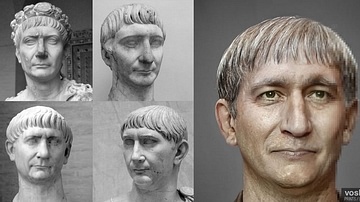
Image
Trajan (Artistic Facial Reconstruction)
A photorealistic representation of what the Roman emperor Trajan (r. 98-117 CE) may have looked like. Based on contemporary and near contemporary descriptions, as well as archaeological evidence. Pictured alongside the reconstruction are...
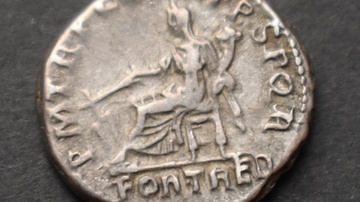
Image
Silver Denarius of Trajan (Reverse Side)
A silver denarius with Trajan (r. 98-117 CE) on the obverse side. Here on the reverse side, the inscriptions demonstrate the major achievements of the emperor. They read as such: PM-TRP-COSVI-PP-SPQR. These are abbreviations for Pontifex...
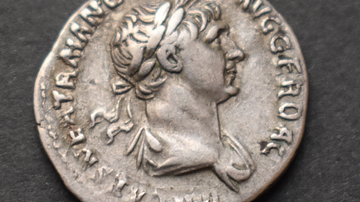
Image
Silver Denarius of Trajan (Obverse Side)
A silver denarius showing the face of Roman emperor Trajan (r. 98-117 CE)
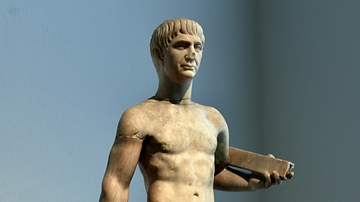
Image
Statuette of Trajan
The head and torso of this statuette did not originally go together. The head is a portrait of the Roman Emperor Trajan (r. 98-117 CE). Records of the sculpture, first presumed to be a gladiator, can be traced back to the Venetian Andrea...
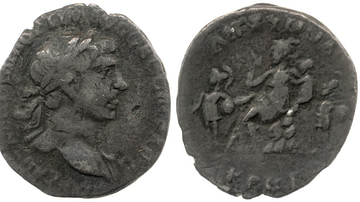
Image
Trajan Cretan Silver Coin Showing Diktynna and Infant Zeus
Silver coin from the Roman Crete, 97-117 CE. The British Museum, London. After the Roman conquest of Crete in 66 BCE, emperors sympathetic to Greek culture, such as Trajan and Hadrian, focused on renovating and developing public spaces...